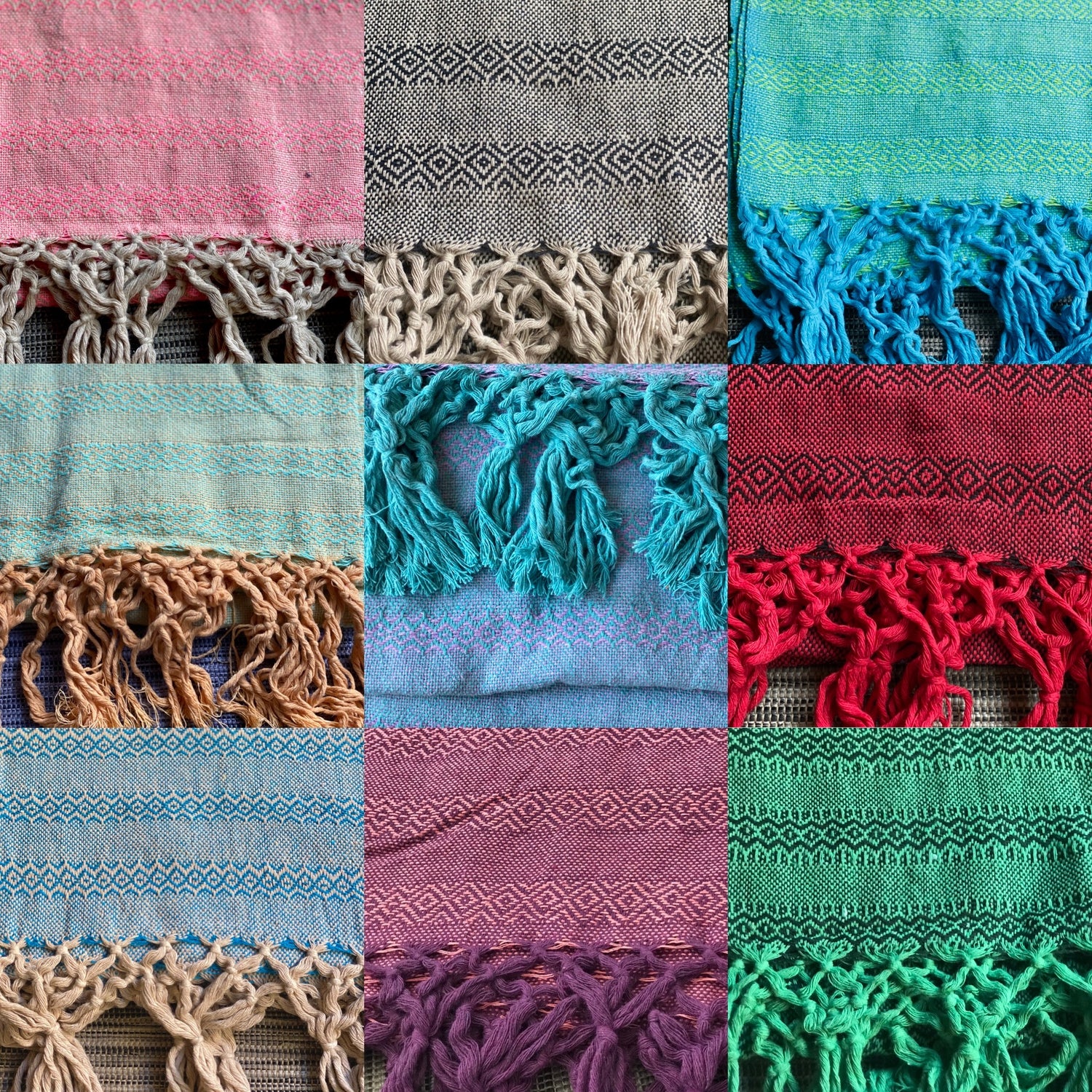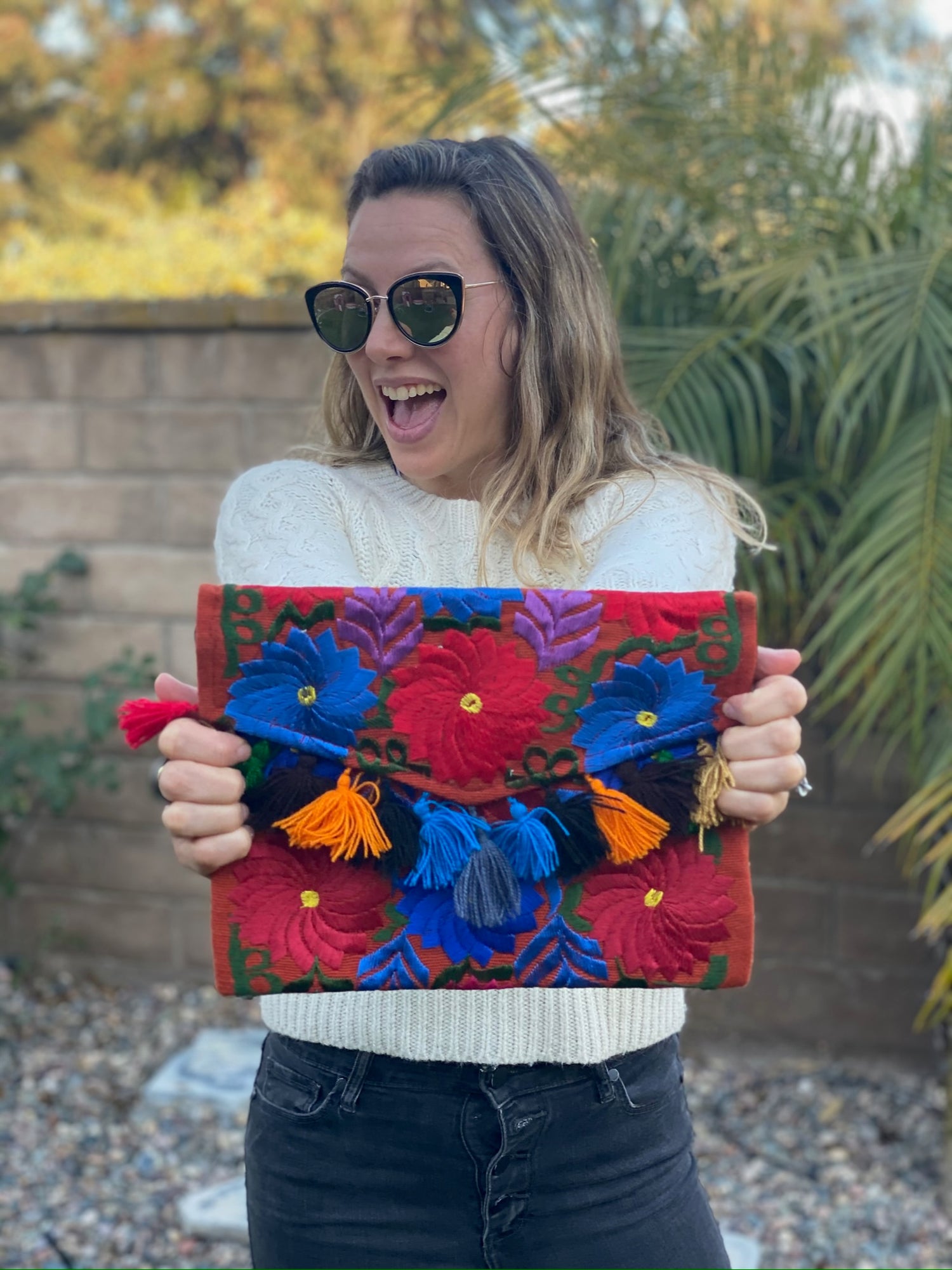The rebozo is more than just a beautiful piece of fabric; it is a cherished heirloom that connects generations of women.
This traditional Mexican shawl carries deep cultural significance and embodies the identity and heritage of those who wear it.
As you explore the stories and craftsmanship behind the rebozo, you will discover how it can be a symbol of love and resilience passed down through families.

Each rebozo tells a unique story that reflects personal and cultural history. Married into family traditions, these pieces often represent key moments in life, from births to celebrations.
By understanding the importance of the rebozo, you gain insight into how these heirlooms maintain connections between past and present.
Learning about the rebozo enriches your appreciation for Mexican culture and highlights the value of preserving such traditions. You'll see how these beautiful garments not only serve practical purposes but also act as vital links to our shared heritage.
Key Takeaways
- The rebozo is a significant part of Mexican culture and identity.
- It serves as a cherished heirloom passed down through generations.
- Understanding its craftsmanship helps preserve vital family traditions.
The Rebozo in Cultural and Historical Context

The rebozo is deeply woven into the fabric of Mexican culture and history. You will find its rich symbolism and significance rooted in tradition. This piece of textile art reflects the identity and resilience of its makers, especially indigenous women.
Understanding its evolution helps you appreciate its timeless value in contemporary society.
Symbolism and Significance in Mexican Heritage
The rebozo symbolizes more than just a shawl; it represents cultural heritage and family bonds. In many Mexican communities, it is seen as an heirloom passed down through generations.
When a woman wraps her child in a rebozo, it signifies love and protection.
The colors and patterns often hold meanings tied to personal history. The various uses of the rebozo in rituals and daily life showcase its importance in cultural traditions.
It serves as a reminder of the resilience of artisans throughout Mexico, particularly following the Spanish conquest, when many indigenous practices were suppressed.
Evolution of the Rebozo: From Ancient Times to Modern Day
The origins of the rebozo trace back to ancient times and indigenous women who first wove these beautiful pieces. Using materials such as cotton and agave fibers, they created useful and artistic textiles.
This craft has evolved through centuries, particularly noted in regions like Oaxaca.
During the colonial period, the rebozo underwent changes in style and material, incorporating influences from Spanish culture. Today, it reflects a fusion of traditional techniques and modern design.
Artisans continue to use their skills to create rebozos that embody cultural pride and artistic expression.
Notable figures, like Frida Kahlo, wore the rebozo, further elevating its status in popular culture. Its relevance remains strong, adapting while still honoring its rich past.
Heirloom and Craftsmanship of the Rebozo

The rebozo is more than a shawl; it holds deep sentimental value, representing family memories and traditions. Its craftsmanship showcases intricate techniques that have been refined over generations, making each piece unique and meaningful.
Passing Down Through Generations: More Than Just a Shawl
A rebozo is often cherished as an heirloom, passed down among women in families. This act connects generations, linking you to your ancestors through its history.
Each rebozo tells a story, carrying memories of special occasions and daily life. The emotional weight behind a rebozo creates a bond that transcends time, as many view it as a symbol of love and protection.
Artistry and Techniques Behind Weaving a Rebozo
The craftsmanship involved in making a rebozo is truly remarkable. Skilled artisans use various weaving techniques to create these works of art. Traditional materials like cotton and silk are commonly chosen for their durability and beauty.
Details such as embroidery and unique designs further enhance their appeal. Regions like Tenancingo are known for their exceptional weaving skills. This expertise is passed down through families, ensuring that techniques remain alive.
For instance, artisans like Carmen Rion and Alison Willoughby have contributed to the appreciation of rebozos in modern fashion.
The Rebozo in Modern Fashion and Lifestyle
Today, the rebozo maintains its significance in Mexican fashion and lifestyle. Designers incorporate rebozos in contemporary clothing, blending tradition with modern aesthetics.
This integration highlights the versatility of the shawl, making it suitable for various occasions.
You may see rebozos worn in festivals or as casual attire, further reinforcing their value and meaning.
Their continued presence in fashion reflects a respect for craftsmanship while celebrating cultural heritage. By wearing a rebozo, you connect with both history and modernity, making it a valuable addition to your wardrobe.
Frequently Asked Questions

When it comes to rebozos, many traditions and practices are tied to their significance as heirlooms. The following sections will answer common questions about their role in families, the ceremonies linked to them, and how they symbolize cultural identity.
How is a rebozo traditionally passed down within families?
A rebozo is often given as a gift from a mother to her daughter. This act signifies trust and the sharing of family history.
It can also be handed down on special occasions like birthdays or milestones in a woman's life.
What ceremonies or rituals are associated with inheriting a rebozo?
In some families, specific ceremonies celebrate the passing of a rebozo. These can include a formal presentation during a family gathering or religious events.
Such occasions highlight the emotional and cultural importance of this heirloom.
What can a rebozo signify in terms of family heritage and identity?
A rebozo reflects a family's unique history and cultural background. It serves as a symbol of identity, connecting you to your roots.
The patterns and colors often represent specific regions or traditions.
How do caretakers preserve the quality of a rebozo for future generations?
To maintain a rebozo's quality, it should be stored away from direct sunlight and humidity. Washing with a gentle detergent is recommended, along with air drying to prevent damage.
Proper care helps keep its beauty intact for years.
What are common practices for incorporating rebozos in modern family events?
Rebozos are often used in family celebrations and gatherings, such as weddings or baby showers. You can wear them during significant moments to honor their cultural heritage.
Some even use them as decorative elements in event settings.
How does gifting a rebozo represent a continuation of cultural traditions?
Gifting a rebozo symbolizes the transfer of values and traditions from one generation to the next. It reinforces family bonds and highlights the importance of cultural practices.
This act serves as a reminder of shared history and identity.




